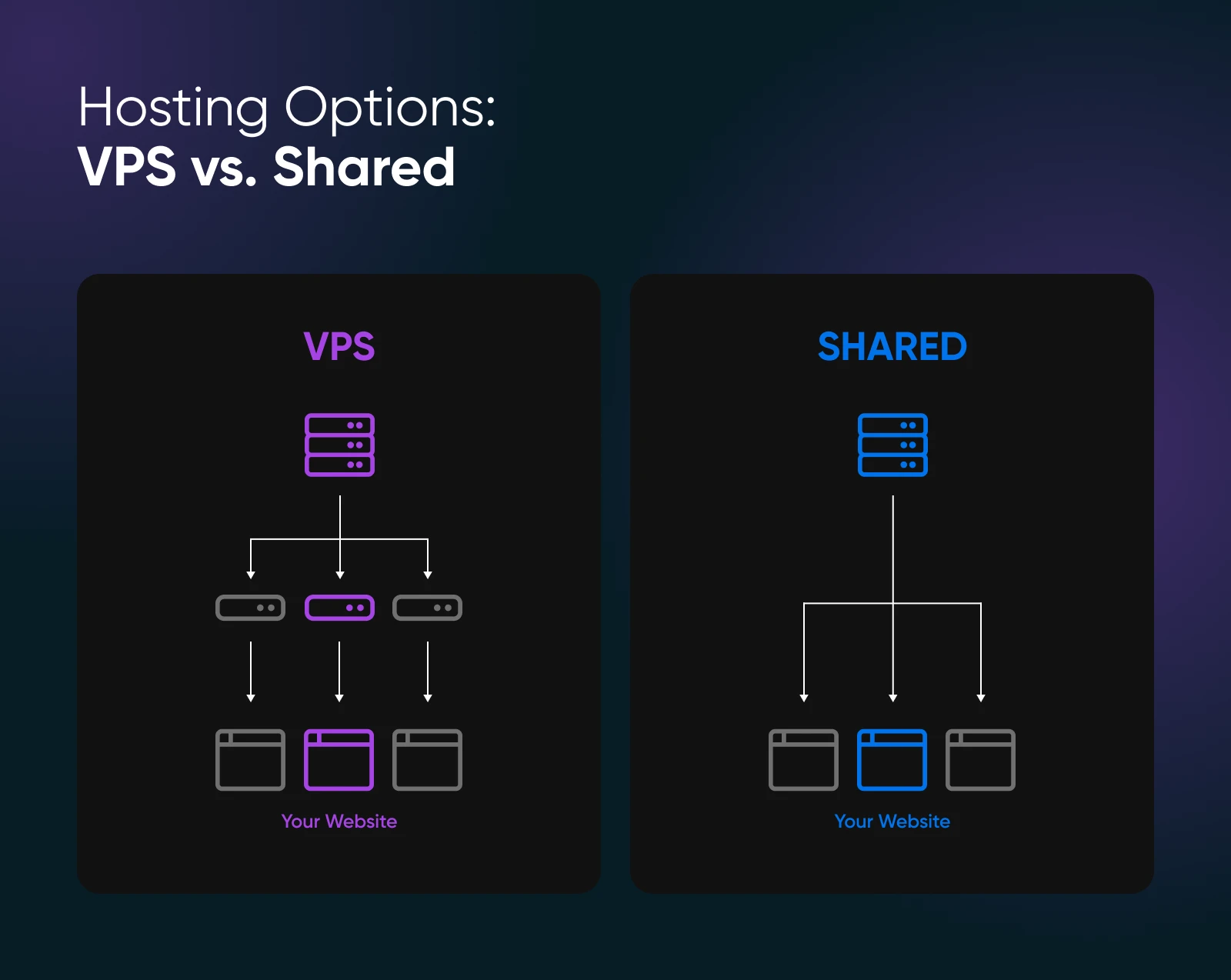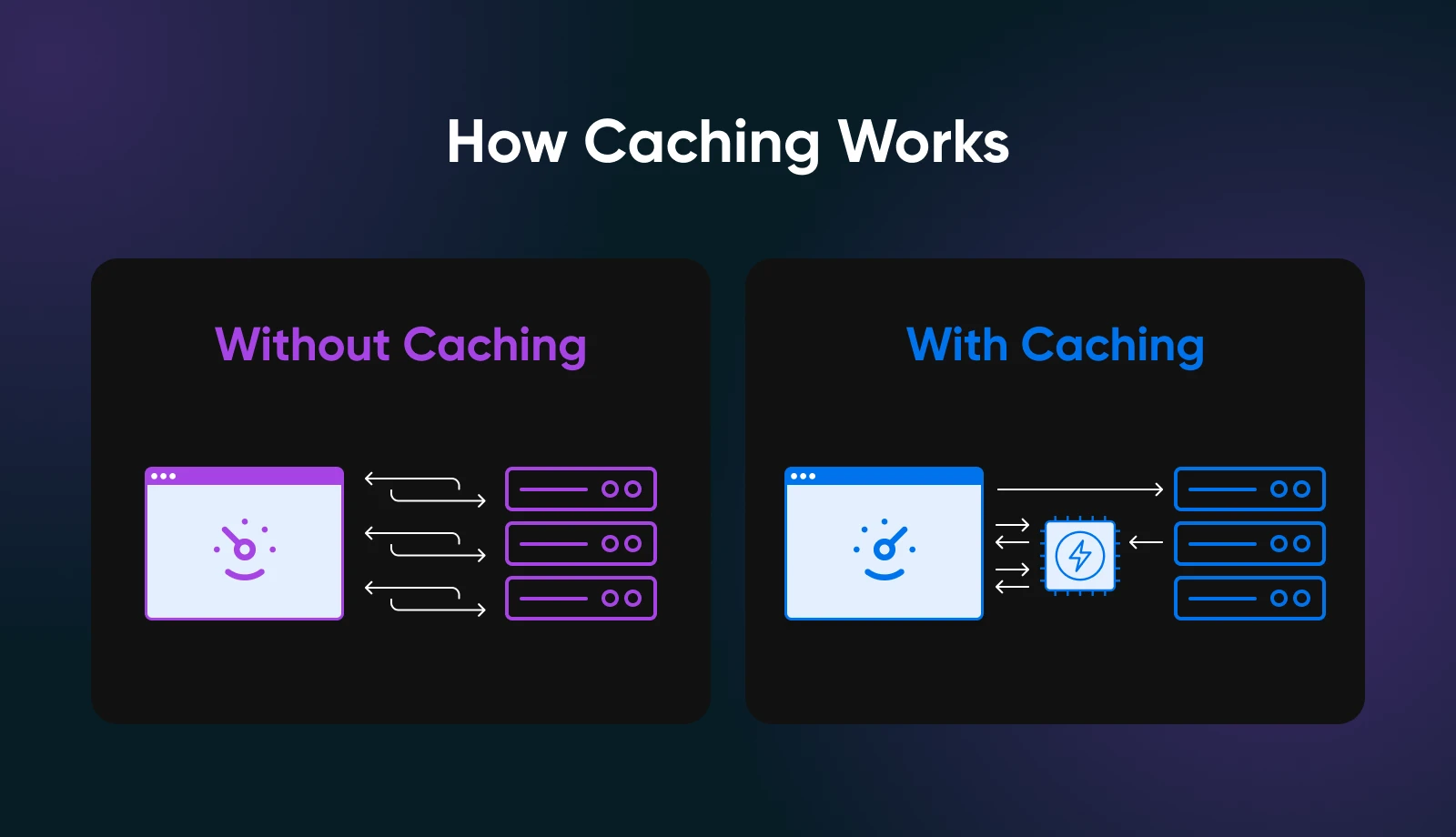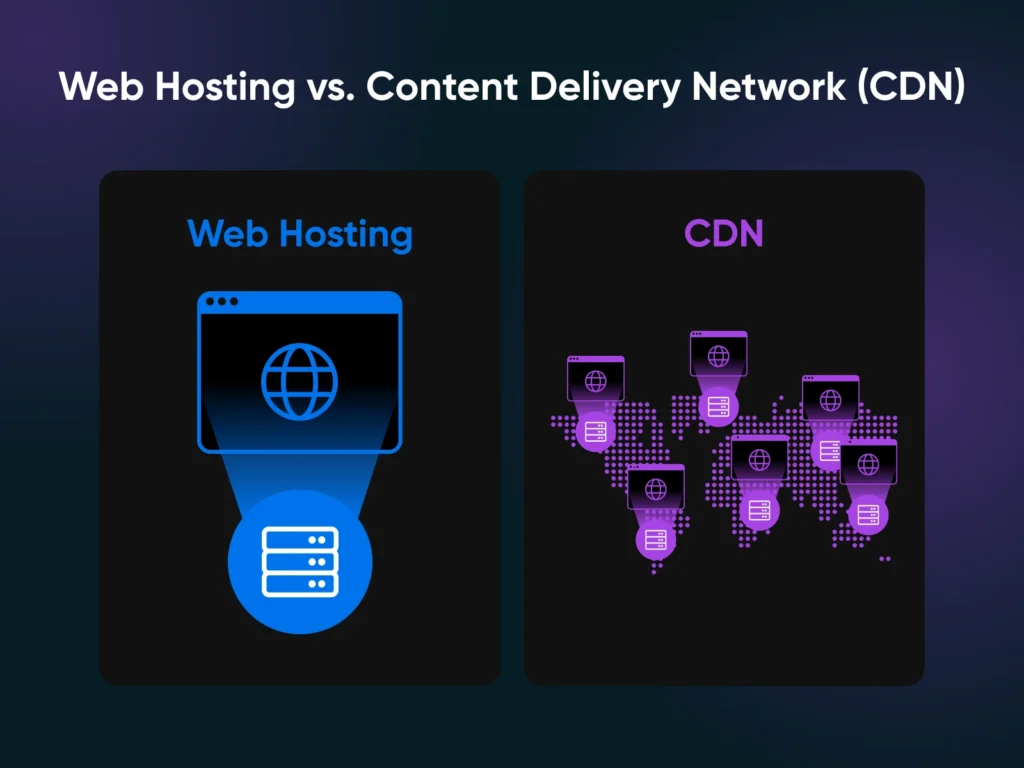Do you get that sinking feeling when your web site masses slower than a snail on a Sunday stroll?
It’s a irritating expertise, particularly in the event you’ve already invested in a digital non-public server (VPS). Isn’t VPS internet hosting alleged to supercharge your web site in comparison with shared internet hosting? Nicely, sure. However, you usually need to fine-tune your VPS to completely unleash its velocity potential.
That’s what we’ll discover right here: a simple but complete information to VPS efficiency tuning. By the top of this text, you’ll know what tweaks could make your web site load quicker, determine bottlenecks, and even whenever you would possibly have to improve your internet hosting plan. (Bonus: how DreamHost may help).
Let’s dive in.
Why Website Velocity Is Essential for Small Companies
Your web site’s velocity does extra than simply fulfill the impatient —it may actually make or break gross sales. Analysis reveals that many guests will bounce if it takes longer than three seconds to load. For a small enterprise, each misplaced customer can imply misplaced income and a possible blow to your repute.
Another the explanation why having a speedy web site issues:
- Consumer expertise: Folks count on near-instant web page masses. In the event that they get caught ready, they may not come again.
- Conversion charges: A quicker web site can result in increased conversions, whether or not “conversion” means a sale, a publication signup, or filling out a contact kind.
- website positioning: Engines like google like Google prioritize quicker websites. Extra velocity can make it easier to rank increased, which interprets to extra site visitors.
VPS Internet hosting vs. Shared Internet hosting
You would possibly already know the fundamentals, however let’s make clear why it’s best to select VPS within the first place.
With shared internet hosting:
- You share server assets (CPU, RAM) with many different websites.
- If one web site hogs assets, everybody else can expertise slowdowns.
- It’s cheaper and simpler to arrange, however there’s much less management and efficiency consistency.
With digital non-public server or VPS internet hosting:
- You get your personal digital “slice” of the server.
- Sources are extra devoted, and you’ve got higher management over configurations.
- Scalability is less complicated, so you’ll be able to alter assets as your web site grows.
Nonetheless, VPS internet hosting isn’t at all times plug-and-play. Certain, you have already got extra energy and suppleness than you get with shared internet hosting, however you continue to have to optimize the server’s settings (and your web site’s code) to see these blazing speeds.

👉🏼 Need to be taught extra? Try our complete comparability: Shared vs. VPS Internet hosting
What Is VPS Efficiency Tuning?
VPS efficiency tuning is the method of adjusting server configurations, software program settings, and useful resource utilization so your web site runs as effectively as attainable. It could possibly contain all the things from updating your server software program to tweaking database queries. The tip purpose is at all times the identical: quicker loading instances and a smoother expertise on your guests.
What Points Does It Clear up
- Visitors spikes: Handles sudden surges in guests with out your web site grinding to a halt.
- Useful resource bottlenecks: Prevents CPU or reminiscence overuse that results in sluggish load instances or crashes.
- Customized wants: Tailors the server’s default settings to fit your particular web site or utility necessities.
Metrics To Watch
- CPU utilization: Excessive CPU utilization means your server’s processor is working additional time, and will point out the necessity for extra CPU or higher optimization.
- RAM utilization: For those who persistently hit reminiscence limits, you would possibly want to extend your RAM allotment or scale back memory-hungry processes.
- Server response time: Instruments like GTmetrix measure how rapidly your server responds to a request.
- Disk I/O: Excessive enter/output operations in your drive can sluggish issues down in case your web site handles plenty of learn/write operations (for instance, massive media information).
Questions To Ask Earlier than You Tune
Not each web site velocity subject is instantly tied to VPS configurations. Typically, the repair is perhaps so simple as compressing pictures. So it’s a good suggestion to test the fundamentals and ask your self just a few questions earlier than diving into superior server tweaks.
- Is your web site sluggish at particular instances?
Discover patterns like peak site visitors hours. In case your web site solely lags throughout sure home windows, which will level to useful resource spikes or concurrency points.
- Have you ever optimized pictures and different media?
Huge picture information or auto-playing movies can kill load instances. Instruments like TinyPNG or picture compression plugins may help.
- Are you utilizing too many plugins or scripts?
In WordPress, particularly, each plugin can add overhead. Disable or delete those you don’t actually want to spice up your web site’s efficiency.
- Are you monitoring server useful resource utilization?
Verify your VPS dashboard or analytics to see in the event you’re persistently hitting CPU or reminiscence limits.
- May you’ve got a safety subject?
Malware or spam assaults can hog assets and sluggish your web site to a crawl. Periodically scan your web site for vulnerabilities.
If all the things above appears so as — and your web site nonetheless lags — it’s time to roll up your sleeves for some VPS efficiency tuning. Head to the following part and comply with the steps to get began.
Step-by-Step Information to VPS Efficiency Tuning
For those who’re new to server administration, the thought of “efficiency tuning” would possibly sound intimidating, however relaxation assured, these steps might be taken regardless of your stage of experience.
Beneath, we’ll stroll by means of every optimization technique so you’ll be able to take rapid motion and see actual enhancements in your VPS-hosted web site’s velocity.
1. Replace and Patch Your Server Software program
Maintaining your server’s working system and software program updated means you’ve got the newest efficiency enhancements and safety fixes. Outdated software program can change into a bottleneck, or perhaps a safety threat.
What to do:
- Log in to your VPS: Do that utilizing SSH or your internet hosting management panel.
- Verify for updates: Relying in your setup, some elements might auto-update. Nonetheless, test for accessible patches or really useful updates.
- Apply updates: When prompted, affirm that you just need to apply all upgrades. This would possibly take a couple of minutes; keep away from rebooting or closing your terminal mid-process.
- Restart providers: As soon as upgrades are achieved, chances are you’ll have to restart providers like Apache, NGINX, or MySQL for modifications to use.
- Verify for brand new updates periodically: And keep watch over launch notes to see if new variations deal with particular efficiency points.
Humble Brag/Tech Tip: DreamHost VPS plans are absolutely managed. What does that imply? Nicely, customers don’t want to fret about managing server-level software program. Allow us to deal with the core methods when you deal with persevering with to construct what you are promoting.
2. Configure Caching (Server-Aspect and Software-Stage)
Caching prevents your server from doing the identical work repeatedly. By storing often requested information in reminiscence or on disk, your web site can reply quicker to requests.
What to do:
- Set up and allow caching modules: This may fluctuate relying in your setup.
- For Apache, take into account enabling “mod_cache” or “mod_deflate.”
- For PHP, be certain that OPcache is operating (usually put in by default on newer PHP variations). You possibly can test by making a phpinfo() file or your server’s PHP config.
- Allow browser caching:
- In your .htaccess (Apache) or server block (NGINX), set expires headers for static information (pictures, CSS, JavaScript).
- Validate that caching is working: Use developer instruments in your browser (Community tab) to see if information are being served from cache. Verify your web site velocity utilizing GTmetrix earlier than and after enabling caching.
- Experiment with completely different TTL (time-to-live) values to steadiness contemporary content material vs. velocity: For those who discover stale content material points, alter cache guidelines or implement cache purging.

3. Optimize Net Server Settings
Your internet server software program is perhaps utilizing default settings that aren’t excellent on your site visitors ranges or web site construction. Tweaking concurrency, compression, and different parameters helps your VPS serve pages extra effectively.
What to do:
- Verify your logs for clues: For instance, error logs or entry logs would possibly present repeated 503 errors in case your server is overloaded. You possibly can alter settings step by step based mostly on what you see and take a look at the impression every time.
- Monitor CPU/RAM utilization after every change you make: In case your web site experiences random spikes, take into account implementing price limits or throttling to deal with malicious or extreme requests.
- An thought for a spot to start out: Configure concurrency or allow compression.
- Find your server’s config file and improve or lower employee processes/threads based mostly in your RAM.
4. Fantastic-Tune Your Database
Databases can rapidly change into efficiency bottlenecks. Optimizing them means quick queries and environment friendly use of server reminiscence.
What to do:
- Optimize your config file: The precise course of for doing this may fluctuate relying on the kind of database you utilize, however you’ll have to edit my.cnf, which is commonly in “/and so on/mysql/” or “/and so on/.” The worth you utilize will rely in your VPS RAM. For instance, don’t allocate 2GB in case your total server solely has 2GB complete.
- Indexing and desk upkeep: Use phpMyAdmin or MySQL CLI to run:
OPTIMIZE TABLE your_table_name;
ANALYZE TABLE your_table_name;This reclaims unused house and updates index statistics. Then, take away previous information, logs, or revision histories you not want.
- Establish sluggish queries: Allow the sluggish question log by including to “my.cnf.”
slow_query_log = 1
slow_query_log_file = /var/log/mysql/slow-queries.log
long_query_time = 2Verify the log file to see which queries exceed two seconds, then work on optimizing these or including lacking indexes.
- Database nonetheless sluggish? Think about splitting learn/write masses or switching to a extra superior engine if acceptable.
5. Allow CDN (Content material Supply Community) for Static Belongings
A CDN offloads static information (like pictures, CSS, and JS) to a number of servers throughout the globe. When customers go to your web site, these property load from the closest server, decreasing latency and boosting your web site velocity.
What to do:
- Select a CDN supplier: Cloudflare is a well-liked choice that gives a free tier.
- Replace DNS or combine:
- For Cloudflare, change your area’s nameservers to Cloudflare’s. They’ll proxy site visitors by means of their community.
- For different CDNs, you would possibly simply add a CNAME (e.g., “cdn.yourdomain.com”) pointing to their servers.
- Configure cache guidelines:
- Resolve how aggressive the CDN’s caching must be. Sometimes, you need pictures, CSS, and JS to be cached for no less than every week or extra.
- Be sure dynamic pages (like cart or account pages) should not cached.
- Use GTmetrix to match load instances earlier than and after: You must see a noticeable drop in complete request time, particularly for customers far out of your origin server.
- Verify your CDN’s analytics dashboard to verify it’s actively caching: If sure information aren’t being cached, replace your guidelines or see in case your code units particular headers that forestall caching.

6. Modify PHP and Script Execution Limits
Your VPS could also be operating PHP scripts that often want extra reminiscence or time to finish. Setting these limits correctly prevents out-of-memory errors with out letting rogue scripts hog all assets.
What to do:
- Enhance or lower your reminiscence restrict: Discover your PHP config file (usually php.ini or .person.ini) and alter “memory_limit.”
- Tweak execution time: Search for “max_execution_time” or “max_input_time.” Setting them too excessive can result in caught processes; too low would possibly break complicated operations.
- Verify logs: For those who see errors like “Allowed reminiscence measurement of X bytes exhausted,” you would possibly want a better reminiscence restrict or extra environment friendly scripts. In case your web site randomly instances out, take into account a slight bump to “max_execution_time.”
- Your purpose is to strike a steadiness: You don’t need to masks poorly optimized code by giving it limitless assets. If sure scripts nonetheless hog reminiscence, examine or seek the advice of with a developer.
7. Audit Your Web site for Bottlenecks
Even the most effective server optimizations can’t repair poorly coded themes or 100 uncompressed pictures. A radical web site audit will make it easier to deal with front-end or application-level points.
What to do:
- Run velocity assessments: Do that utilizing GTmetrix to see if heavy scripts or massive pictures are the actual culprits.
- Minify and mix CSS/JS: Minification removes pointless characters in code. Some caching plugins do that routinely (e.g., W3 Complete Cache, Autoptimize). Combining a number of CSS/JS information right into a single file reduces the variety of HTTP requests.
- Allow lazy loading: For pictures beneath the fold, you should use a lazy load plugin or code snippet to load them solely because the person scrolls.
- Disable extra plugins and themes: In WordPress, go to “Plugins” and deactivate something non-essential.
- After every change, re-run your velocity assessments: Incremental enhancements are simpler to measure, and also you’ll see which tweaks have the most important impression. Preserve a clear web site construction as you develop — keep watch over new plugins or code to ensure they don’t re-introduce bottlenecks.

When To Improve Your VPS Plan
You would possibly attempt all of the above tips and nonetheless discover your web site crawling at peak instances. That’s a powerful trace you’ve outgrown your present VPS tier.
For those who see:
- Continually excessive CPU or RAM utilization: Even with caching and optimization, your useful resource graphs preserve spiking.
- Frequent slowdowns or crashes: You’re nonetheless battling downtime throughout site visitors surges.
It could be time to put money into a higher-tier VPS. Particularly for e-commerce websites that depend on velocity to maintain clients engaged and coming again, that is an funding that may pay for itself.
DreamHost gives a number of VPS plans with various RAM and CPU allocations. Every plan contains an easy-to-use dashboard and proactive alerts, so you’ll be able to scale up immediately whenever you’re prepared.
Bettering your web site’s loading velocity isn’t about tinkering with random settings and hoping for the most effective. There’s a way behind the insanity, which begins with primary housekeeping (compressing pictures and eradicating bloated plugins) and progresses to server-level optimizations (caching, database tuning, and CDN integration).
Able to get extra velocity? Try DreamHost’s VPS internet hosting plans to see how straightforward it’s to handle and tune your server, full with user-friendly dashboards and top-tier help. As a result of a quicker web site isn’t only a perk — it’s a enterprise benefit you’ll be able to’t afford to miss.

Take Cost with Versatile VPS Internet hosting
Right here’s how DreamHost’s VPS providing stands aside: 24/7 buyer help, an intuitive panel, scalable RAM, limitless bandwidth, limitless internet hosting domains, and SSD storage.
Did you take pleasure in this text?

